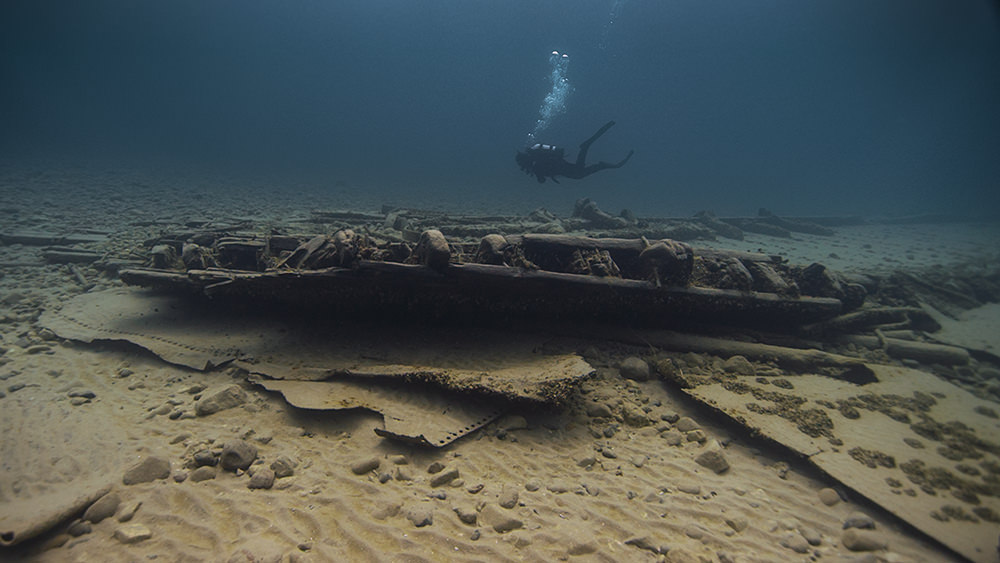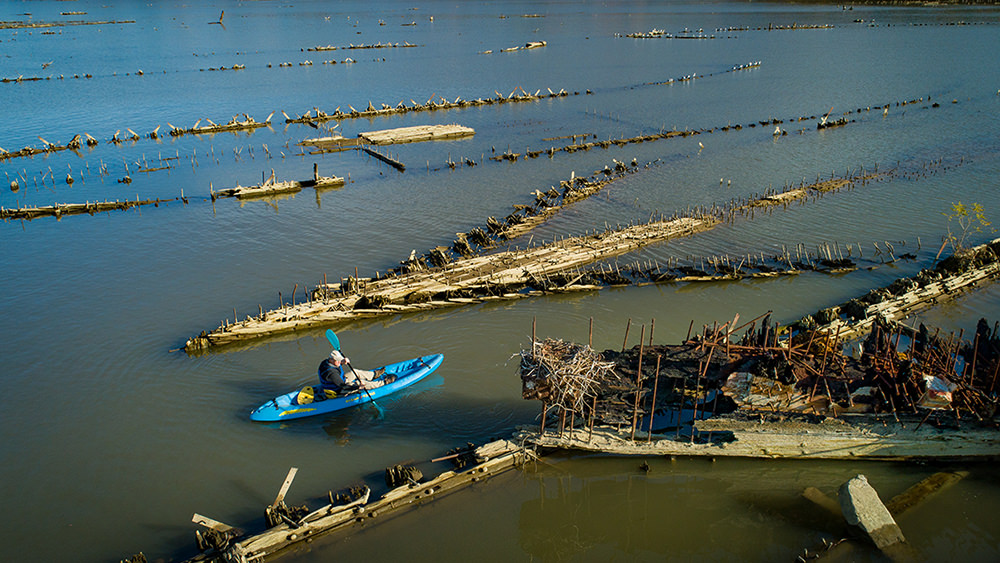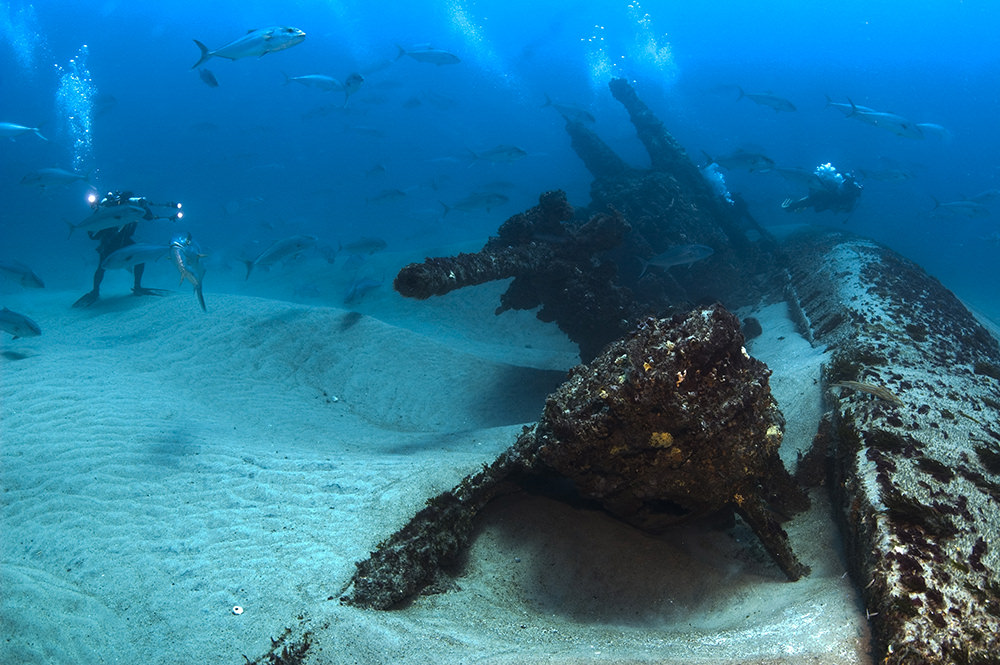Honoring National Historic Preservation Month in Your National Marine Sanctuary System
By Megan Swanson
May 2020
The month of May is National Historic Preservation Month, dedicated to recognizing the importance of our nation’s historical places. Our national marine sanctuaries are home to many historical relics like shipwrecks and naval battlefields that serve as a museum of our nation’s seafaring past. To celebrate, we are sharing ways that you can explore our underwater maritime heritage from the comfort of your home.
Beyond the virtual resources shared below, there are also ample opportunities to visit these underwater museums and to responsibly recreate among them. Whether kayaking, paddleboarding, diving, or taking a glass bottom boat tour, there is a way for everyone to experience and explore the historic wonders that lie within our national marine sanctuaries.

Dive (Virtually) Through the Shipwrecks of Thunder Bay
Thunder Bay National Marine Sanctuary was designated in 2000 to protect one of the nation’s best-preserved and most diverse collections of shipwrecks. Thunder Bay National Marine Sanctuary contains an area considered one of the most treacherous stretches in the Great Lakes that has earned the nickname “Shipwreck Alley.” You can explore some of the shipwrecks that have been discovered in Thunder Bay National Marine Sanctuary by taking a virtual dive through our gallery of 360° photos. Learn more about the stories behind these shipwrecks by watching the Great Ships on the Great Lakes webinar. Next time you are in Thunder Bay, be sure to stop by the Great Lakes Maritime Heritage Center where you can see a full-size replica of one of the shipwrecks and feel what it is like to be in a Great Lakes storm.
Click and drag the image for a 360-degree view of the Kyle Spangler shipwreck in Thunder Bay National Marine Sanctuary. Photo: NOAA, in collaboration with The Ocean Agency
Take an Aerial Tour of Mallows Bay’s Ghost Fleet
Mallows Bay-Potomac River is the newest national marine sanctuary and protects the remnants of 118 World War I-era wooden steamships and vessels known as the Ghost Fleet. Take an aerial tour of these ships that were made to meet strategic shipping needs during World War and to replace vessels lost to German U-boats. Although the ships never saw action during the war, their construction at more than 40 shipyards in 17 states reflected the massive national wartime effort that drove the expansion and economic development of communities and related maritime service industries.

Tour Historical Shipwrecks off of Northern California
The combination of rocky coastline, year-round fog, and a narrow entrance into San Francisco Bay has contributed to many shipwrecks in Greater Farallones National Marine Sanctuary and surrounding areas. Over 400 ship and aircraft wrecks are believed to exist in Greater Farallones National Marine Sanctuary, with the earliest shipwreck recorded in 1595 – however, that ship’s remains have not yet been discovered. This interactive story map allows you to explore shipwrecks in this area dating back to the 1880s!
Explore our Nation’s World War II Battlefield
Monitor National Marine Sanctuary off the North Carolina coast was our nation’s first national marine sanctuary, designated in 1975. While the sanctuary was designated to protect the shipwreck of the USS Monitor, a Civil War ironclad, the sanctuary is surrounded by additional shipwrecks, notably many World War II shipwrecks. Take a look at this video and lesson plan to learn more about how closeWorld War II came to the continental U.S. during the Battle of the Atlantic. NOAA is considering expanding the sanctuary to include the Battle of the Atlantic and honor the sacrifice and valor of our veterans.
Monitor National Marine Sanctuary also offers a number of fun educational activities where you can learn to make an origami Monitor or play bingo to test your knowledge.

Watch the Real-Life Sequel to Moby Dick
In 1823, Captain George Pollard, the same captain who previously survived a shipwreck that inspired the novel Moby-Dick, endured a second shipwreck in what is now Papahānaumokuākea Marine National Monument. Watch this video that shares the story of Captain Pollard, how he survived his second shipwreck, and NOAA archaeologists’ exciting discovery of the whaleship nearly two centuries later. If you are interested in diving deeper into the maritime heritage around the Hawaiian Islands, you can explore sunken ships, navy aircrafts, and Hawaiian fishing sampans with Papahānaumokuākea’s interactive map.
Learn More About Our Nation’s Maritime Heritage
These are just a few of the many maritime heritage resources that lie within your national marine sanctuaries. In fact, nearly every site within the National Marine Sanctuary System protects maritime and cultural heritage resources that inspire education and exploration. If you are interested in learning more about our nation’s maritime heritage, be sure to check out these educational resources as well as this report on the rich history within our national marine sanctuaries.
NOAA’s Office of National Marine Sanctuaries is also working to protect even more of our important maritime heritage sites and is currently in the process of designating two additional sanctuaries: Wisconsin-Lake Michigan and Lake Ontario.
Megan Swanson is a graduate student at Duke University’s Nicholas School of the Environment and a constituent and legislative affairs intern for NOAA’s Office of National Marine Sanctuaries.

